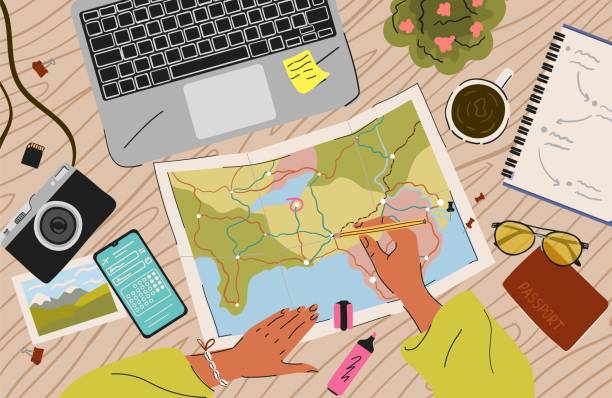In an era marked by wanderlust and globalization, travel has become more than just a leisure activity—it’s a lifestyle. Whether you’re a seasoned globetrotter or a novice explorer, the key to a successful journey lies in meticulous planning. From choosing the destination to booking Travel Guides accommodations and mapping out daily itineraries, each step contributes to the overall experience. In this comprehensive guide, we delve into the art of travel planning, providing insights, tips, and strategies to help you orchestrate unforgettable adventures. 
1. Define Your Travel Goals: Before embarking on any journey, it’s crucial to define your travel goals. Are you seeking relaxation on a tropical beach, cultural immersion in bustling cities, or adrenaline-pumping outdoor adventures? Understanding your objectives will guide your destination selection and itinerary planning.
2. Choose the Right Destination: With countless destinations vying for your attention, selecting the perfect one can be overwhelming. Consider factors such as your interests, budget, time constraints, and travel preferences. Research destinations thoroughly, taking into account climate, local culture, safety, and accessibility. Websites, travel blogs, and social media platforms are valuable resources for gathering information and inspiration.
3. Set a Realistic Budget: Budgeting is a fundamental aspect of travel planning. Determine how much you’re willing to spend on transportation, accommodation, meals, activities, and souvenirs. Be realistic and factor in unforeseen expenses. Look for cost-saving opportunities such as off-peak travel, discounts, and rewards programs. Utilize budgeting apps or spreadsheets to track expenses and stay within your financial limits.
4. Plan Your Itinerary: Crafting a well-rounded itinerary ensures you make the most of your time at the destination. Prioritize must-see attractions, activities, and experiences while allowing flexibility for spontaneity. Research transportation options, opening hours, and admission fees in advance. Consider alternative routes and off-the-beaten-path gems to avoid crowds and immerse yourself in authentic experiences.
5. Book Accommodations Wisely: The right accommodation can enhance your travel experience and provide a comfortable retreat after a day of exploration. Consider factors such as location, amenities, reviews, and price when choosing lodging. Explore a variety of options, including hotels, hostels, vacation rentals, and homestays, to find the best fit for your preferences and budget.
6. Pack Strategically: Packing efficiently is an art form that can streamline your travel experience and alleviate stress. Create a packing list tailored to your destination, activities, and climate. Pack versatile clothing items that can be mixed and matched, and consider the functionality of each item. Don’t forget essentials such as travel documents, medications, and electronic devices and their chargers. Aim to pack light to avoid excessive baggage fees and cumbersome luggage.
7. Stay Organized and Informed: Organization is key to smooth travel logistics. Keep all travel documents, including passports, visas, and tickets, in a secure and easily accessible location. Utilize travel apps and online resources to stay updated on flight status, weather forecasts, transportation schedules, and local events. Stay connected with loved ones using communication tools and share your itinerary for added safety.
8. Embrace Spontaneity and Adaptability: While meticulous planning is essential, leaving room for spontaneity can lead to unexpected discoveries and memorable experiences. Be open to serendipitous encounters, detours, and changes in plans. Embrace the local culture, interact with locals, and step outside your comfort zone. Flexibility and adaptability are key skills for navigating the unpredictable nature of travel.
9. Practice Responsible and Sustainable Travel: Traveling responsibly involves respecting the environment, culture, and communities you visit. Minimize your ecological footprint by conserving resources, reducing waste, and supporting eco-friendly initiatives. Respect local customs, traditions, and etiquette, and strive to leave a positive impact on the places you explore. Engage in sustainable tourism practices such as supporting local businesses, minimizing plastic usage, and participating in community-based initiatives.
10. Reflect and Share Your Experiences: As your journey comes to an end, take time to reflect on your experiences and lessons learned. Keep a travel journal or blog to document memories, insights, and recommendations for future trips. Share your experiences with friends, family, and fellow travelers, inspiring others to embark on their own adventures.
In conclusion, mastering the art of travel planning requires careful consideration, preparation, and a sense of adventure. By defining your goals, choosing the right destination, setting a realistic budget, planning your itinerary, booking accommodations wisely, packing strategically, staying organized and informed, embracing spontaneity, practicing responsible travel, and reflecting on your experiences, you can craft unforgettable journeys filled with discovery, connection, and transformation. So, where will your next adventure take you?
